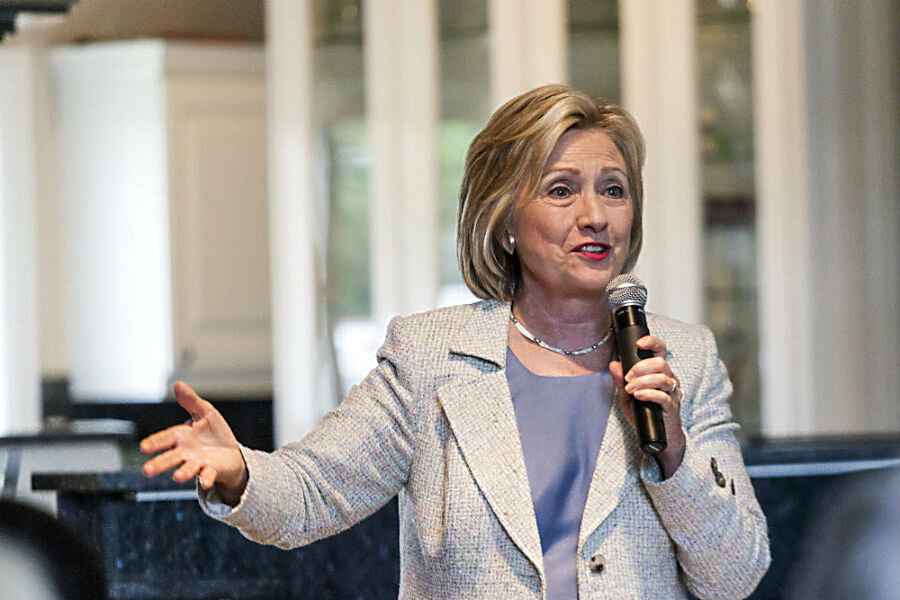How does Hillary's climate change plan compare to Martin O'Malley's?
Loading...
Democratic frontrunner Hillary Clinton revealed her initial plan for addressing climate change while campaigning in Iowa on Sunday, saying that those who don’t acknowledge the issue are "just not paying attention.”
"This is not complicated, folks," Ms. Clinton said, speaking to a crowd of more than 200 people at Iowa State University. "I'm just a grandmother with two eyes and a brain. And I know we're facing a huge problem.”
To tackle the problem, Clinton proposes, through tax incentives, to increase the amount of power derived from renewable sources such as wind and solar.
"We need to get the incentives fixed in our tax system which as you know are too heavily weighted toward fossil fuels," Clinton said.
The former Secretary of State also implied that her plans would impose changes on the coal industry. She credited coal mine workers for having "created an industrial revolution” and stated that "it is important that we help them transition to a new economy."
In a video released Sunday night, Clinton named two national goals that she will set if elected president. The first is to have more than half a billion solar panels installed across the country by the end of her first term. The second is that, within a decade, the United States will generate enough clean, renewable energy to power every home in within its borders.
"The decisions we make in the next decade can make all of this possible, or they can keep us trapped in the past," Clinton says in the video. "We cannot wait any longer.”
Clinton plans to outline her plan in greater detail on Monday.
In response to Clinton’s proposals, fellow 2016 Democratic contender Martin O’Malley called attention to his plan, which he says addresses not only consumer energy use, but also industry and transportation.
In Mr. O’Malley’s plan, announced just over a month ago, the former Maryland governor said that “a moral obligation to future generations to act immediately and aggressively” required us to transition to a fully clean energy economy by 2050.
In his white paper, O’Malley argued that the transition to 100 percent clean energy is the biggest job-creation opportunity the country has seen in a century. He proposes creating a “Clean Energy Jobs Corps” which will work with local communities on energy-saving projects.
He criticized the “all-of-the-above” energy policy used by the White House, stating: “We can’t meet the climate challenge with an all-of-the‐above energy strategy, or from drilling off our coasts, or from building pipelines that bring oil from tar sands in Canada.”
O’Malley plans to seek a cap on carbon emissions from all fossil fuel sources, and use proceeds from federal permits to help lower- and middle-class families with job transition assistance. He also said that he would reject projects such as the Keystone XL pipeline.
During his two terms as governor of Maryland, O'Malley doubled Maryland's renewable fuel production, and reduced the state’s greenhouse gases by 10 percent.
“The fact is, there is no either/or choice between our prosperity and protecting our planet — we can create a future where there are more jobs, and a future with a livable climate,” O’Malley wrote in an op-ed for USA Today. “And there is no future for humankind without a livable climate.”








